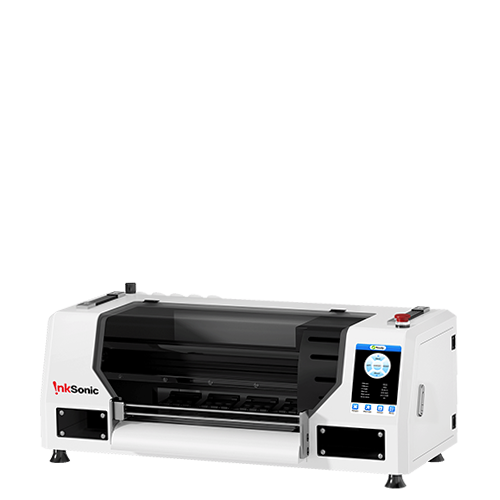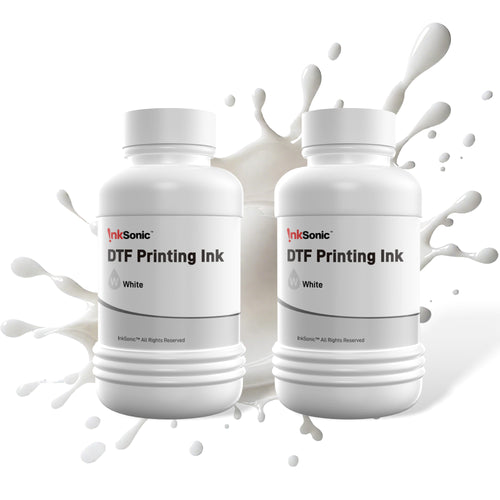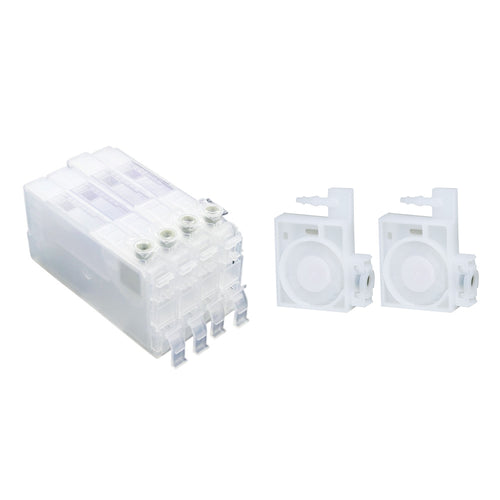1. Introduction
DTF (Direct-to-Film) printing is becoming popular in the printing industry. It's known for its efficiency, flexibility, and high-quality results. As users print more, they might notice that DTF printers slow down over time. This not only affects production efficiency but may also lead to a decline in print quality. This article looks at common symptoms, causes, solutions, and tips to prevent slow DTF printing speeds. It helps you maintain your equipment and keep your printing efficient.
2. What are the common symptoms of slow DTF printing?
When DTF printing speed slows down, the following symptoms are often observed:
Longer Printing Time: It takes much more time to finish the same printing tasks.
Slow Print Head Movement: The print head moves slowly while printing. This cuts down on printing efficiency.
Frequent Printing Interruptions: The printing may stop often, causing disruptions in the workflow.
Decline in Print Quality: Slower printing speeds can cause uneven ink ejection. This may lead to streaks or uneven colors in your prints.
3. Common reasons for DTF printing speed turning slow
There are various reasons for slow DTF printing speeds. Below are some common causes and detailed analyses:
3.1 Dirty Linear Guide Rails

The print head guide rails are critical components for print head movement. Dust, ink residue, or debris on the guide rails slows the print head. This buildup makes it harder for the print head to move quickly. Also, dirty guide rails can cause the print head to move unevenly. This can harm print quality.
3.2 Overheating or Aging of the Print Head CR Motor

The print head motor is the core component driving the print head's movement. If the motor runs too long, it can overheat. This reduces efficiency and may speed up aging. An aging motor struggles to provide enough power, leading to slower print head movement.
3.3 Improper Software Settings
Printing speed settings may be controlled by software. If the printing speed setting is accidentally lowered or certain parameters (such as ink volume or print resolution) are improperly configured, it may lead to slower printing speeds.
3.4 Poor Heat Dissipation of the Printer Motherboard

DTF printers generate significant heat during operation. If the printer motherboard has poor heat dissipation, the internal temperature may rise too high, affecting task transmission speed and overall printing efficiency.
3.5 Wear or Contamination of the Carriage Slider

The printer carriage slider ensures stable movement of the printer carriage. Prolonged use can cause the slider to become dirty or worn, thereby affecting printing speed.
4. Solutions
To address the above causes, here are some effective solutions:
4.1 Clean the print head guide rails
Regularly clean the print head guide rails to remove dust and ink residue. Use specialized cleaning agents and soft cloths to ensure the guide rails are smooth and unobstructed.
4.2 Inspect and Replace the Print Head CR Motor
If the print head motor is overheating or aging, check its operating condition. If necessary, replace the CR motor to ensure normal print head movement.
4.3 Adjust Software Settings
Check the printer software for printing speed settings. Make sure they are optimized. Adjust parameters such as ink volume and print resolution according to the requirements of the printing task.
4.4 Improve Equipment Heat Dissipation
Ensure the printer is placed in a well-ventilated environment and regularly clean the cooling fans and heat sinks to prevent overheating. If the printer's motherboard is aging, please replace it promptly.
4.5 Address Carriage Slider Wear or Contamination

First, check if the slider guide rails have sufficient lubricant. Remove the slider guide rail cover. Then, check the carriage slider for wear or dirt. Clean or replace the slider module promptly to ensure printing efficiency.
5. Daily Prevention
To prevent slow DTF printing speeds, here are some daily maintenance recommendations:
Clean Regularly: Keep the print head guide rails, ink lines, and other key parts clean. This helps stop dust and debris from building up.
Regular Inspections: Check the print head motor and ink pump often. This helps to spot and fix problems early.
Proper Usage: Don't run the equipment for too long without a break. Give it enough rest to stop the motor from overheating.
Environmental Control: Keep the temperature and humidity in the printing area just right. This helps prevent damage to the equipment.
6. Conclusion
Slow DTF printing speeds can happen for several reasons:
Dirty Print Head Guide Rails – Increases resistance, slowing print head movement.
Aging or Overheating Motor – Reduces efficiency, affecting print speed.
Improper Software Settings – Incorrect configurations may lower speed.
Poor Motherboard Heat Dissipation – Overheating impacts task processing.
Worn/Contaminated Carriage Slider – Hinders smooth print head movement.
Regular cleaning, inspection, and maintenance help prevent these issues, ensuring efficient operation.
7. Welcome to the InkSonic Blogs Overview!
Explore the latest DTF printer tips and solutions with our quick preview navigation! Inkbear provides professional guidance on DTF printer daily maintenance. And common issues:Why my DTF printer not printing white ink, DTF printer printhead common problems. It helps you enhance your printing process effortlessly.
Want to boost efficiency? Learn how to fix 15 common DTF printer issues while discovering cost-saving strategies to maximize profits.
Planning for 2025? Stay ahead with the fastest marketing calendar to capture key opportunities. Plus, check out The Ultimate Guide to Starting a T-Shirt Business in 2025 for expert insights on achieving success!
Want to know the latest technology? The top 15 Most Asked UV DTF Questions will give you answers


































